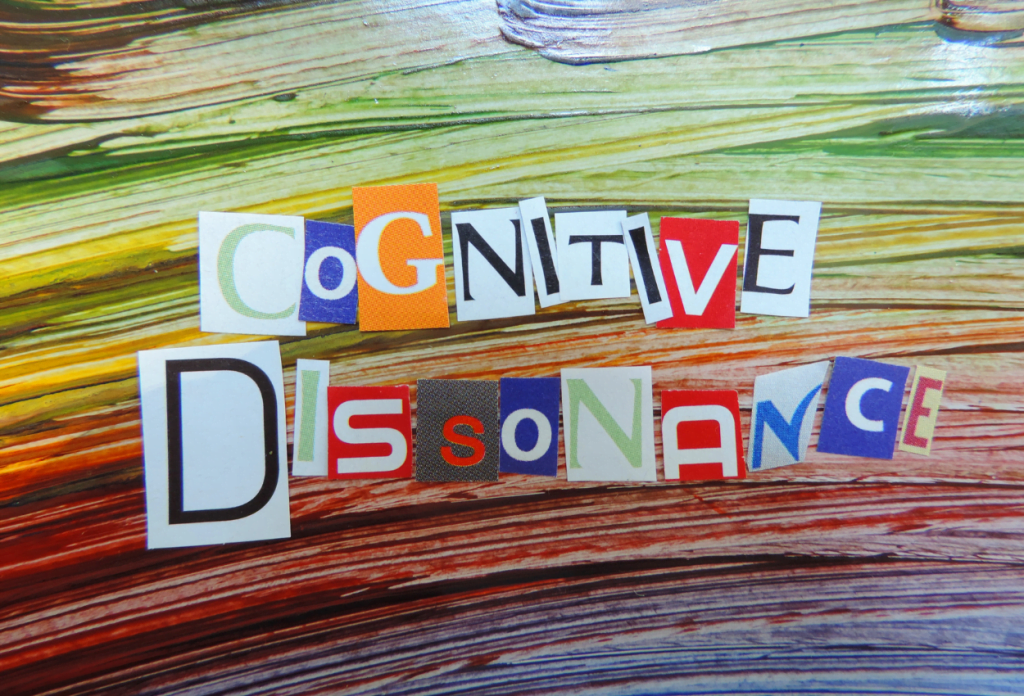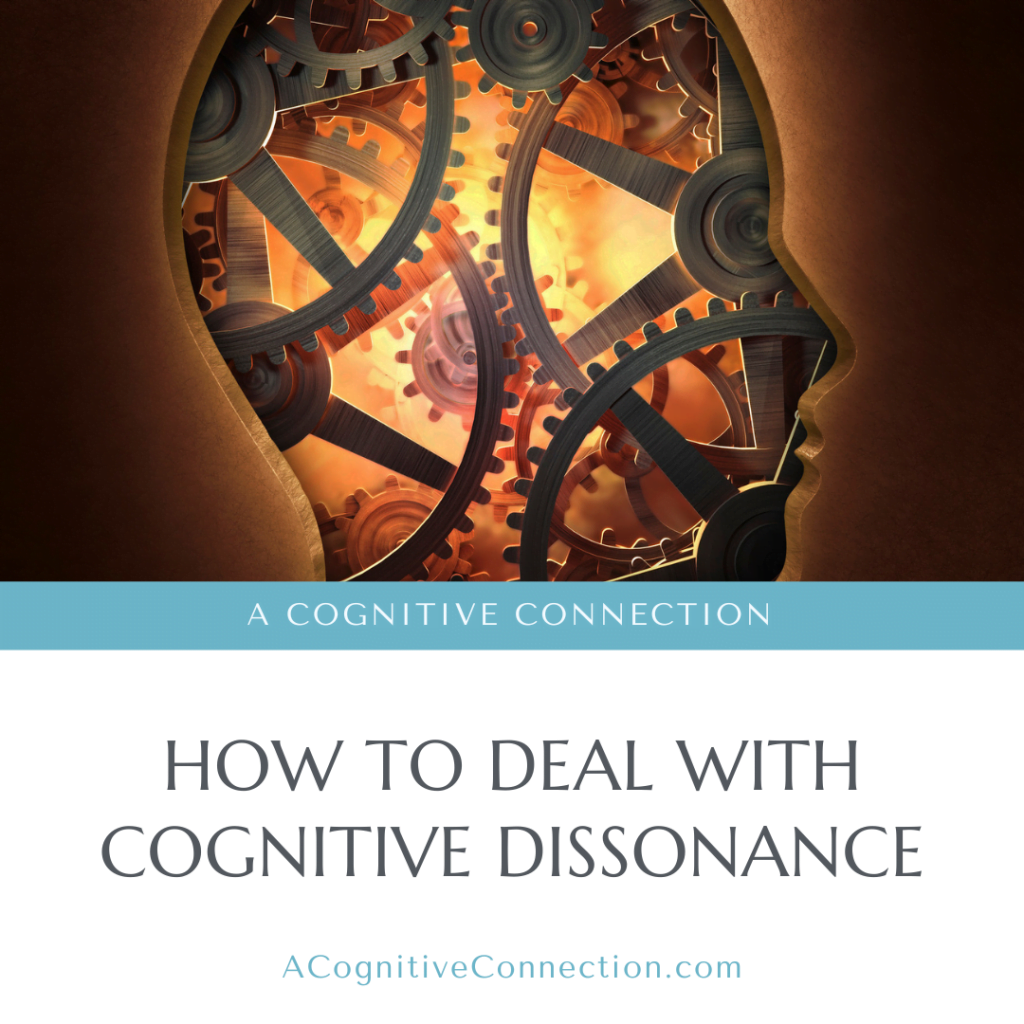Embarking on the journey to understand and deal with cognitive dissonance is crucial for maintaining mental harmony. In this guide, we’ll delve into practical strategies to navigate the complexities of cognitive dissonance, offering insights that empower you to foster a more balanced and aligned mindset.
Let’s unravel the layers of internal discord, cultivate resilience, and embark on a path toward cognitive harmony together. Throughout this exploration, we’ll embrace simplicity, making the understanding of these strategies accessible and applicable to your everyday experiences.
So, let’s get started on this journey of self-discovery and growth in managing cognitive dissonance!
Understanding Cognitive Dissonance
Picture this: you’re cruising through life, and suddenly, you find yourself in a mental traffic jam. Your beliefs are honking in one direction, while your actions are signaling another way. That uncomfortable gridlock in your mind? That’s cognitive dissonance waving its quirky flag.
So, what’s the fuss about? Well, cognitive dissonance is like the brain’s way of saying, “Hey, something’s not adding up here!” It’s that feeling when you realize your beliefs, attitudes, or values are having a bit of a disagreement party inside your head. The result? Psychological discomfort that sets off an internal alarm, urging you to restore some order and consistency.
Think of it as a friendly reminder from your brain to do a little mental housekeeping. It’s the mind’s way of saying, “Let’s tidy up these conflicting thoughts, shall we?”
So, buckle up as we navigate the twists and turns of cognitive dissonance, exploring how it impacts our daily lives and the nifty strategies to untangle those mental knots. Get ready for a laid-back journey into the fascinating world of the mind’s balancing act! Let’s understand how to deal with cognitive dissonance when it happens.

Tip 1: Acknowledge and Accept
The first step in dealing with cognitive dissonance is a bit like waving hello to an old friend. Yep, it might sound strange to label discomfort as a friend but hear me out. Acknowledging that cognitive dissonance is just part and parcel of being human is like giving it a little nod of recognition.
It’s saying, “Hey, I see you there, doing your thing in my brain.” And here’s the kicker — realizing that having conflicting thoughts doesn’t make you any less intelligent or compromise your integrity. It’s almost like having a messy room. Just because there’s a bit of chaos doesn’t mean you’re not a stellar person.
So, think of cognitive dissonance as your mind’s way of signaling that it’s time for a bit of mental tidying. Acceptance becomes your trusty broom, sweeping away any doubts about your intellect or character. It’s not about having it all figured out; it’s about acknowledging the messiness, embracing it, and setting the stage for some growth. After all, the most beautiful gardens often start with a little dirt.
Tip 2: Explore the Source
Identifying the specific beliefs or attitudes causing the dissonance is a bit like playing detective with your own thoughts. Imagine you have a magnifying glass, and you’re zooming in to figure out what’s causing the internal tug-of-war. Delve into the root of the conflict, and it’s almost like unraveling a mystery — peeling back layers to reveal the core.
Take a moment to question whether these beliefs are the VIPs aligning with your core values or if they’ve overstayed their welcome and need a rethink.
Picture it as a sorting hat moment from your favorite wizarding world. Is this belief Gryffindor-worthy, matching your values, or is it more of a Slytherin, needing a reconsideration? It’s not about casting judgment; it’s about understanding. So, grab that metaphorical magnifying glass, embark on a journey of self-discovery, and let the truth-seeking adventure begin.
Tip 3: Embrace Flexibility
Think of cultivating a mindset of flexibility as tending to the garden of your thoughts. In this ever-changing landscape of your mind, envision your beliefs as adaptable plants. Embracing flexibility means being a gardener of your own ideas, allowing for the ebb and flow of intellectual seasons.
Consider your beliefs not as rigid structures but as living entities that can evolve. Adaptability is like giving them the nutrients of new experiences and the sunlight of diverse perspectives. Recognize that adjusting beliefs is a sign of intellectual maturity, akin to a tree bending gracefully in the wind.
So, metaphorically put on your mental gardening gloves, be open to the winds of change, and watch your mindset flourish with the vibrant colors of adaptability. In the dynamic garden of your thoughts, flexibility is the key to fostering a flourishing intellectual landscape.

Tip 4: Seek Resolution
Addressing cognitive dissonance is akin to navigating the intricate dance of finding harmony within your thoughts. It’s like crafting a melody where each conflicting note transforms into a harmonious chord. Seeking resolution becomes the rhythm of this internal symphony, playing to the beat of your authentic self.
This process is an art, akin to refining a masterpiece. It involves the brushstrokes of modifying beliefs, the strokes of seeking additional information, and the canvas of reframing perspectives.
Just like an artist seeks balance and harmony in their composition, strive for a balanced viewpoint that resonates with the authentic melody of who you truly are. In this symphony of self-discovery, let your resolution be the crescendo that brings internal harmony to life.
Tip 5: Learn and Grow
Embrace cognitive dissonance as a stepping stone on the path of personal development. Similar to a guide leading you through a landscape of self-discovery. Instead of shying away from discomfort, view it as the fertile soil where the seeds of growth take root.
Each encounter with cognitive dissonance is a chance to refine your understanding of the world, much like a sculptor chiseling away to reveal a nuanced masterpiece. Let the discomfort be the catalyst that propels you to critically evaluate your thoughts and beliefs, forging a path toward a more profound and enriched perspective.
In this journey of exploration, every instance of cognitive dissonance becomes a chapter in the book of your evolving self.

What to Learn From Cognitive Dissonance
Navigating the intricate terrain of cognitive dissonance is akin to embarking on a personal odyssey. It demands a blend of self-reflection, an open-minded approach, and a steadfast dedication to personal growth.
Begin by acknowledging the presence of cognitive dissonance — it’s a natural part of the human experience. Also, embrace flexibility with the mindset that change and evolution signify intellectual maturity.
Understand Your Cognitive Dissonance With A Cognitive Connection
At A Cognitive Connection, we view cognitive dissonance not as a hurdle but as an opportunity for profound learning and personal development. With our support, embrace the discomfort as a catalyst for growth, prompting critical evaluation of thoughts and beliefs. Each instance of cognitive dissonance becomes a chance to refine your understanding of the world, enriching your mental landscape.
Dealing with cognitive dissonance is a nuanced process unique to each individual, and A Cognitive Connection is here to walk this transformative journey with you. Celebrate your growth, foster a mindset of continuous self-discovery, and remember — your authentic mental state is the destination, and we’re here to help you reach it.



